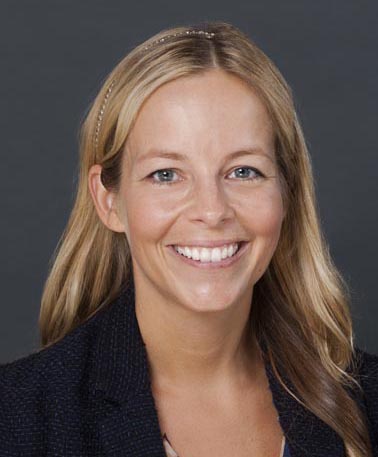Dr. Siegel-Hawley quoted in N.Y. Times article
Why 'Do you support busing?' is not the best question
By Emily Badger, The New York Times
July 6, 2019

In the short time since Kamala Harris and Joe Biden tangled over the history of busing in the first Democratic primary debate, the question has awkwardly shifted to the present.
Busing is still needed today, Ms. Harris has since said. But discussion of just what that would look like has appeared to make both candidates uncomfortable on the campaign trail. As the issue lingers, it is easy to imagine a future debate question — one of those raise-your-hand episodes: “Do you support busing today?”
That is not the right question for this moment, according to researchers who’ve studied school desegregation and what happened when those efforts waned across the country. The term “busing” itself remains loaded in the same way it was in the 1970s. And the deeper problems that policy sidestepped remain largely unresolved today, with many school systems more segregated now than they were under court-ordered integration plans.
“The question is not, ‘Do we say yes or no to a 1970s-through-1990s intervention?’” said Ansley Erickson, a historian at Columbia University. “It’s ‘What is the intervention we need right now?’”
We know that schools and communities are segregated today because of past actions, in part those taken intentionally by the government, she added. What’s the obligation of the president today, she would also ask each candidate, to address that?
Matthew Delmont, a historian at Dartmouth who has written about the history of busing, said, “If it just becomes a question of ‘Do you support busing?’ that misses the whole history of how that became a code word to oppose school desegregation.” He would put the question this way: “If we actually care about education for students of color and low-income students, what kinds of school and housing policies will make things better a decade from now?”
Their questions both touch on housing policy for a simple reason: Schools are segregated because communities are.
But historically, the defendants in most school desegregation cases were school districts and school boards, and so courts had no power to demand fixes that might have affected the housing market.
“Why was the burden of undoing centuries of discrimination and segregation placed solely on schools?” said Genevieve Siegel-Hawley, a professor at Virginia Commonwealth University who studies the relationship between schools and housing.
That placed outsized expectations on busing that would be the same today, and raises another question:
“Why was the burden of undoing centuries of discrimination and segregation placed solely on schools?” said Genevieve Siegel-Hawley, a professor at Virginia Commonwealth University who studies the relationship between schools and housing.

George Romney, Mitt Romney’s father and the secretary of Housing and Urban Development during the Nixon administration, argued for withholding federal money from communities that blocked housing for lower-income and minority families, rather than just transporting African-American children to schools in such places. But President Nixon halted the idea.
“That could have been a really different turning point in terms of how we think about school desegregation, but also about our neighborhoods,” said Erica Frankenberg, a professor of education at Penn State.
Maybe that’s worth asking candidates about, too: Raise your hand if you believe the federal government should withhold money from communities that intentionally block economic and racial integration. (Cory Booker’s housing plan, for one, would do that.)
School integration built over time into neighborhoods would probably have been more lasting than the integration that busing helped accomplish. Researchers have found that court orders ending school desegregation plans resulted in immediate changes in both classrooms and housing markets.
After the courts in 2001 ended a comprehensive desegregation plan in Charlotte, N.C., that included busing, research by Stephen Billings, David Deming and Jonah Rockoff found that African-American male students in newly segregated schools were more likely to drop out of high school, less likely to go to college, and more likely to be arrested as young adults.
In the housing market in Charlotte, the researchers David Liebowitz and Lindsay Page found that white families with children were more likely after 2001 to move to whiter neighborhoods than they had been before desegregation ended.
If busing helped to decouple housing decisions from school considerations, that was no longer true once desegregation plans ended.
Evidence of all the links between where people live and how they think about schools have piled up: Research shows that rising income segregation in America since 1990 has been largely driven by the housing choices of parents with children, as higher-income families pursue the neighborhoods that come with the best schools. Another recent study found that the spread of online public school ratings has driven up the price of housing near higher-ranked schools, contributing to the sorting of wealthier and white families into those neighborhoods.
In addition, research has repeatedly found that communities with more comprehensive school desegregation plans have had faster declines in racial residential segregation than places without such school policies. And when Montgomery County, Md., required developers to build affordable housing in wealthier neighborhoods, poorer children who had access to good schools in those neighborhoods excelled in math and reading.
Other policies that might help disrupt the feedback loop between neighborhood and school segregation include measures to equalize school funding within states across school districts, so that wealthy communities with higher property taxes wouldn’t inherently have more to spend on education, compounding the advantages that also make housing in those districts more desirable.
School ratings systems that include diversity and not just test scores could provide a different signal to home-buying parents, who often say in the abstract that they value school diversity even if they oppose means like busing of creating it. Tax credits to develop affordable housing or housing vouchers given to individual families could also be leveraged to move more families closer to good schools. Districts could draw attendance zones in ways that cut across neighborhoods with different demographics.
Some of these choices would have to be made locally. But the federal government could offer grants to entice districts and states willing to make them.
In the absence of integration, perceptions of the “best schools” become incorporated into housing prices. And white homeowners defending their property values perceive threats in the possibility of integrating schools — or in the loss of “neighborhood schools” they control.
“It looks different when you’re contesting a busing plan in a metropolitan area in the 1970s than it does when you’re contesting a school zoning plan in Manhattan in 2019,” Ms. Erickson said. “But I think the core linkages, especially for white people, between racial segregation and ideas about educational value and property value — that feels quite enduring.”
Busing alone never could have unwound that knot. The more relevant question for presidential candidates today is what could — and how they plan to talk to white parents about that.